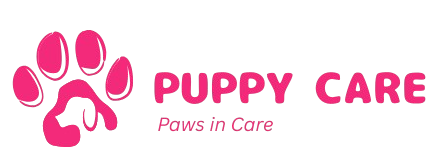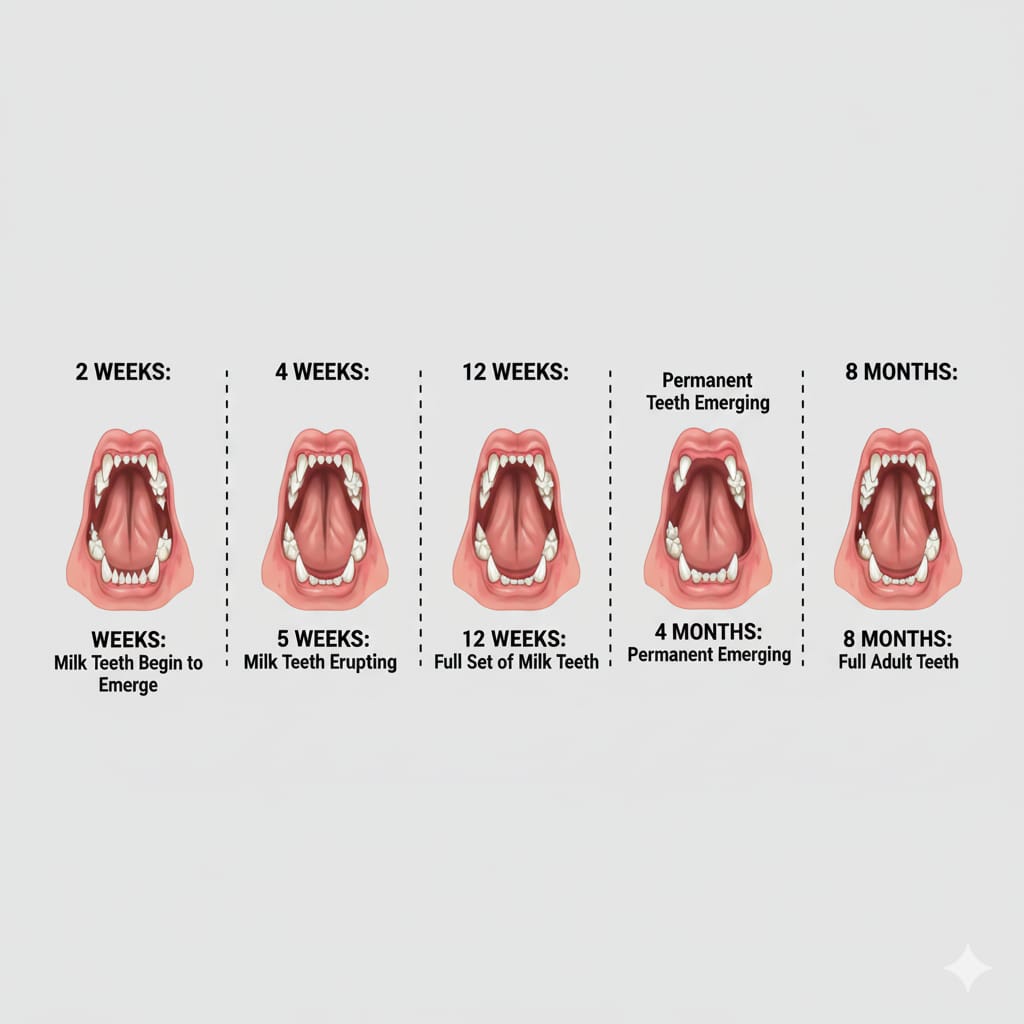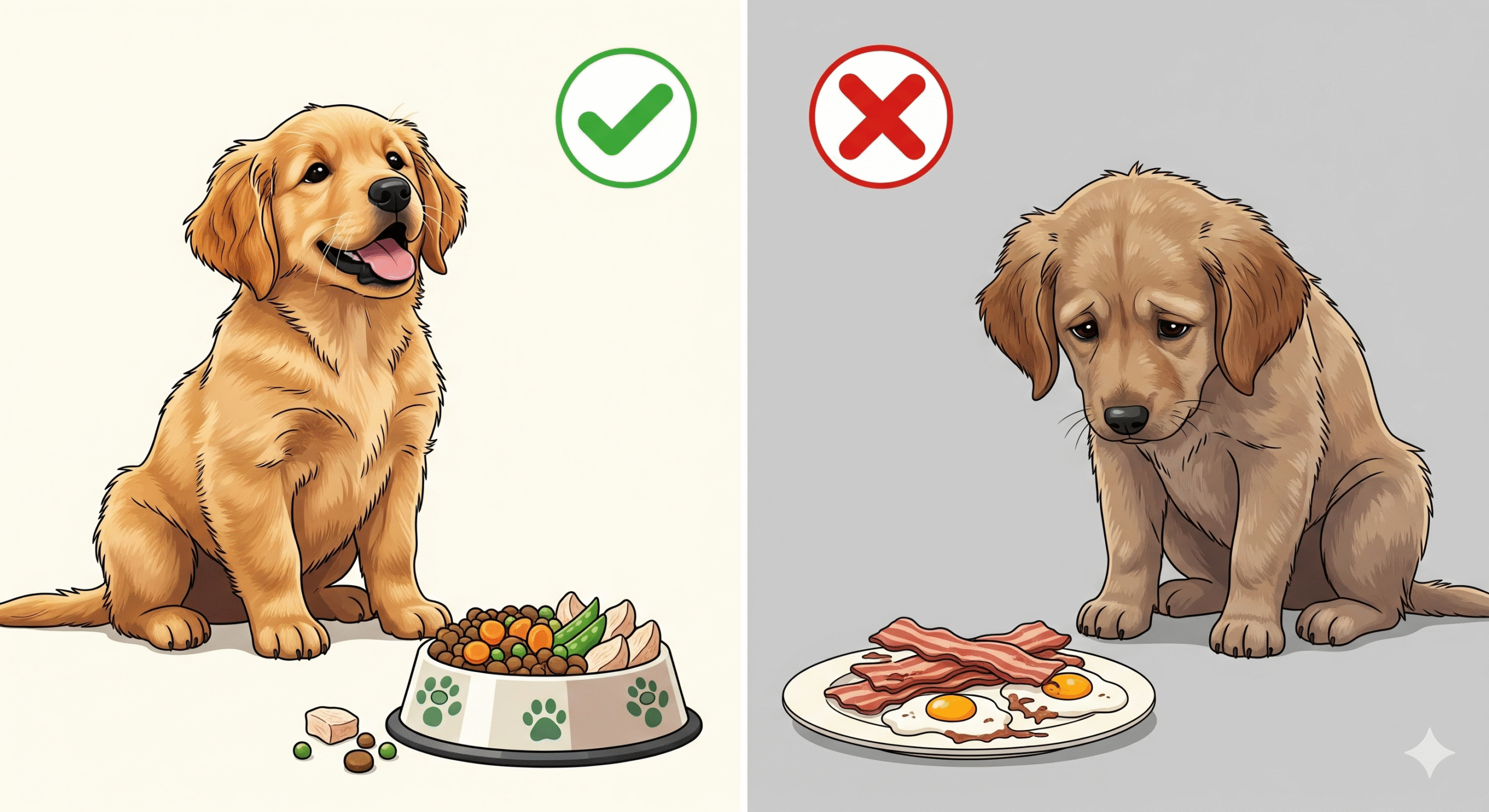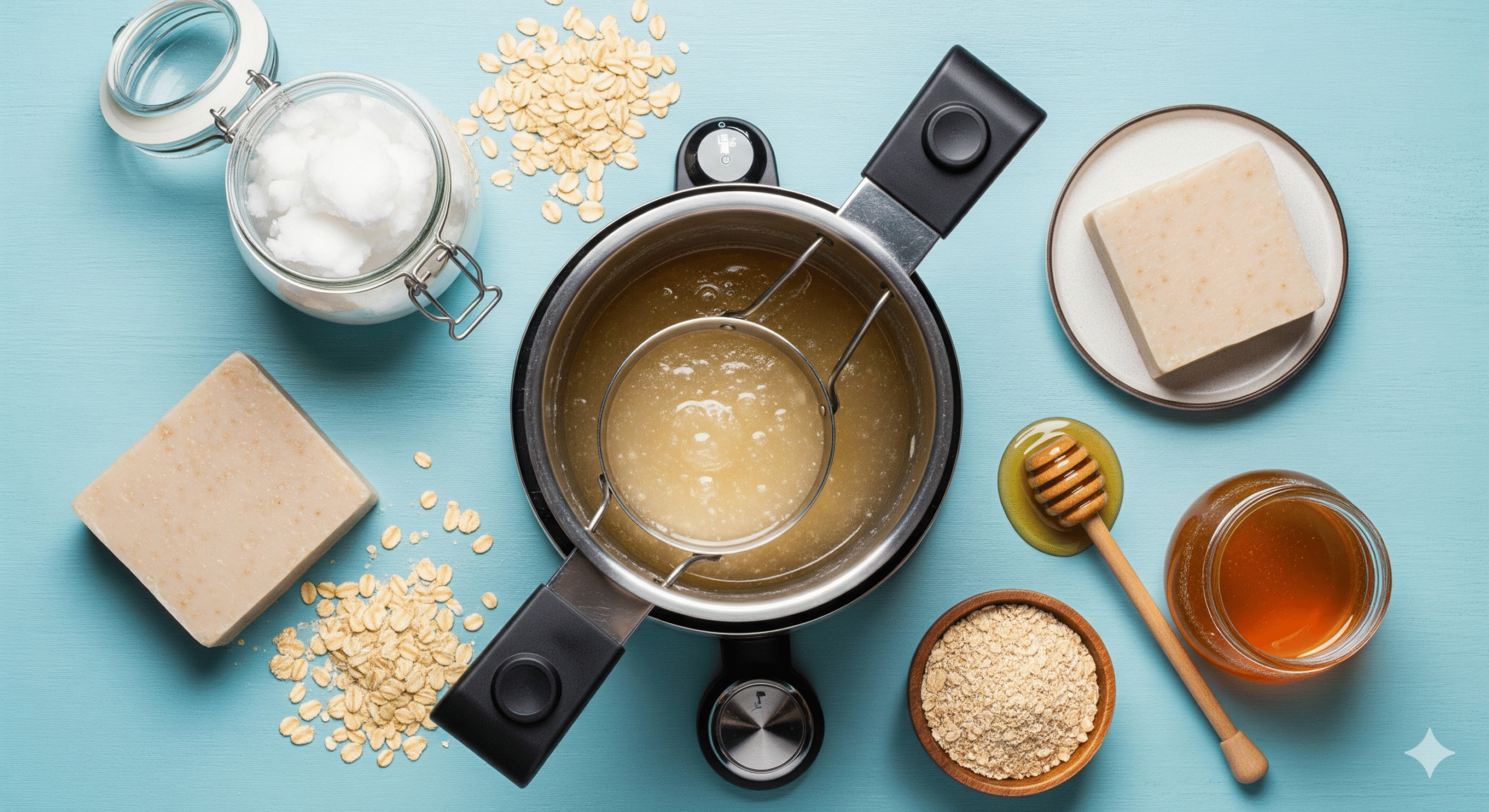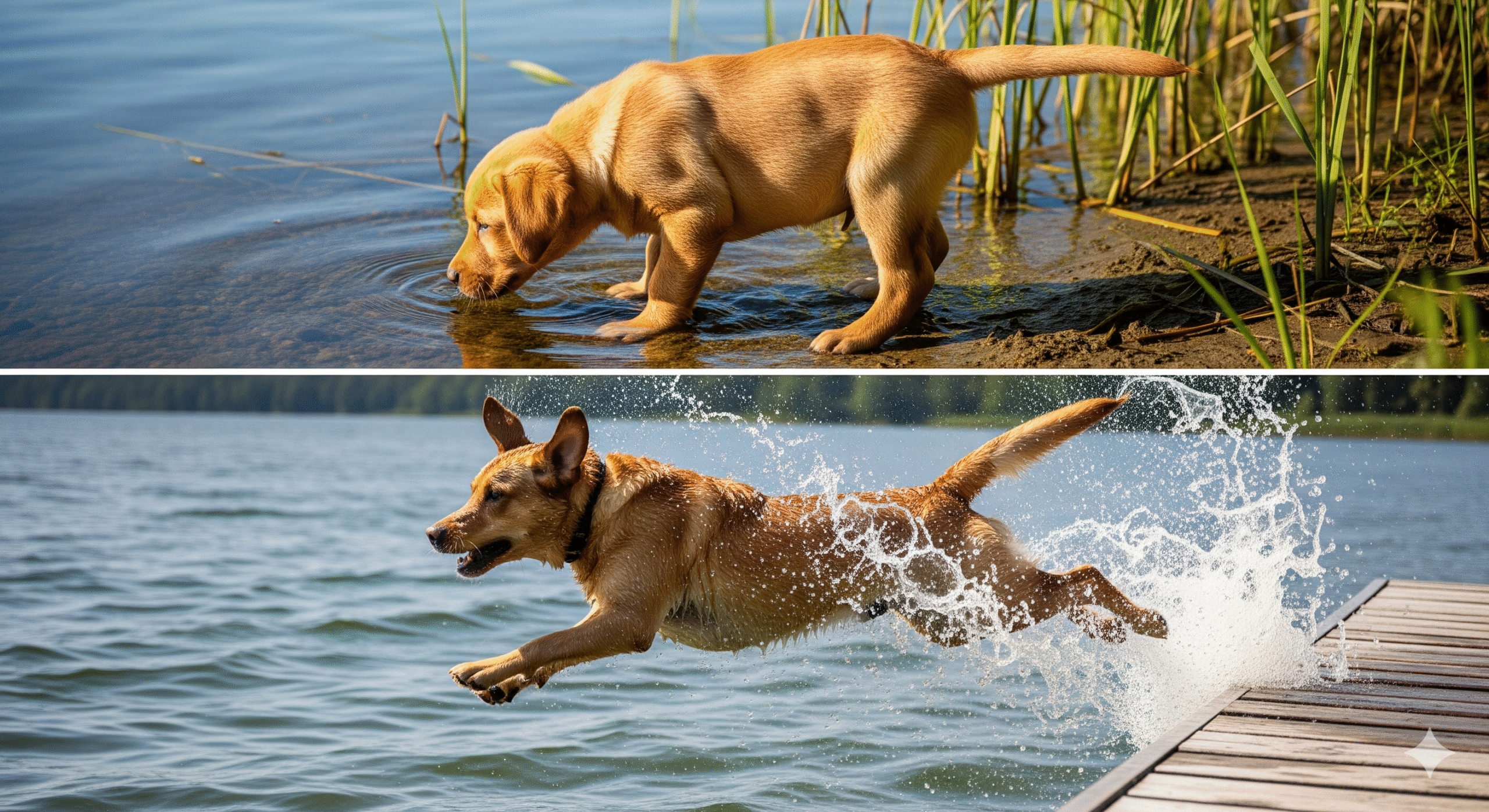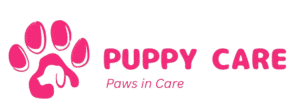That adorable new puppy of yours is a tiny, furry piranha. Your fingers, your shoes, and even the furniture legs aren’t safe from their needle-sharp teeth. Before you get frustrated, know this: your puppy isn’t trying to be destructive. They are going through a perfectly normal—but challenging—developmental phase called teething.
Understanding the puppy teething timeline is your first step toward surviving this phase with your sanity (and your favorite sandals) intact. This comprehensive guide will walk you through exactly what to expect, week by week and month by month. We’ll provide vet-approved soothing tips for each stage, turning you from a chew-toy into a teething expert ready to help your furry friend through this uncomfortable process.
Why Do Puppies Teethe? The Science Behind the Nibbles 🦷
Teething is the process of a puppy’s baby teeth erupting and later being replaced by their permanent adult teeth. This process is physically uncomfortable and even painful for your pup. Chewing is their natural response to this discomfort; it helps to massage their sore gums and assists in loosening baby teeth to make way for the permanent ones.
Just like human infants, puppies will seek out anything and everything to gnaw on to relieve the pressure they feel in their jaws. By providing appropriate outlets for this behavior, you not only save your belongings but also teach your puppy what is acceptable to chew from day one.
The Complete Puppy Teething Timeline: A Stage-by-Stage Guide 📅
Here’s a breakdown of what you can expect during your puppy’s first several months. Remember, every puppy is an individual, and this puppy teething age range can vary slightly by breed.
Stage 1: Neonatal Period (0 – 2 Weeks) 👶
- What’s Happening: Newborn puppies are born toothless! Their eyes and ears are closed, and they spend almost all their time sleeping and nursing. Teething hasn’t started yet.
Stage 2: Deciduous “Baby” Teeth Eruption (2 – 8 Weeks) 🦷
- What’s Happening: This is when the puppy teething timeline truly begins. A puppy’s 28 baby teeth (also called deciduous teeth) begin to erupt through the gums.
- 2-4 Weeks: The incisors (front teeth) come in first.
- 3-5 Weeks: The canine teeth (the sharp “fangs”) emerge.
- 4-6 Weeks: The premolars (back teeth) come in last.
- What to Expect: By about 8 weeks of age, your puppy will have a full set of razor-sharp baby teeth. This is also when they start learning from their littermates and mother that biting too hard (inhibited biting) is not okay.
- Soothing Tips:
- Provide soft, plush toys or damp, twisted washcloths for them to gently chew on.
- This is a critical period for socialization, so gentle handling is key.
Stage 3: The Calm Before the Storm (8 – 12 Weeks) 🌤️
- What’s Happening: You bring your puppy home during this period! Their baby teeth are all in, and the teething discomfort has temporarily subsided. However, this is a prime time for chewing as they explore their new world with their mouths.
- Soothing Tips:
- Start training now! Redirect all biting onto appropriate toys. A loud “yelp!” and stopping play when they bite too hard mimics how their littermates would react.
- Introduce a variety of puppy teething toys with different textures (rubber, fabric, rope).
Stage 4: The Big Switch – Adult Teeth Arrive (12 Weeks – 8 Months) 🔁
This is the main event of the puppy teething timeline and the most destructive phase. The adult teeth begin to push up, which dissolves the roots of the baby teeth, causing them to fall out.
- 12-16 Weeks: The incisors begin to fall out and are replaced by adult incisors. You might find tiny, rice-sized teeth on the floor or never see them at all (often swallowed during eating—this is harmless).
- 4-6 Months: The canines and premolars are replaced. This is the peak of teething discomfort. You may notice increased drooling, chewing, and even a slight decrease in appetite. Some puppies may have minor gum bleeding, which is normal.
- 6-8 Months: The final molars, which have no baby tooth predecessors, erupt at the very back of the mouth. By around 7-8 months, your puppy should have a full set of 42 permanent adult teeth.
What to Watch For: Retained Baby Teeth 👀
Sometimes, a baby tooth doesn’t fall out as the adult tooth comes in. This is most common in small breeds and with the canine teeth. Retained baby teeth can cause crowding, misalignment, and trap plaque. If you see a double tooth (two teeth in one spot), consult your veterinarian. They will likely need to extract the retained baby tooth to prevent future problems.
Vet-Approved Soothing Tips for a Teething Puppy ❄️
Your goal is to manage your puppy’s pain and protect your belongings. Here are the most effective strategies for soothing a teething puppy.
- The Power of Cold: Cold is a natural anesthetic and anti-inflammatory. It numbs the gums and reduces swelling.
- Frozen Washcloth: Soak a clean washcloth in water or low-sodium chicken broth, twist it, and freeze it. The nubby texture is perfect for gnawing.
- Frozen Toys: Many rubber teething toys (like KONGs) can be stuffed with wet food or yogurt and frozen. This provides a long-lasting, rewarding chew.
- Chilled Treats: Offer puppy-safe frozen fruits and veggies like banana slices, blueberries, or carrot sticks. Always supervise to prevent choking.
- Choose the Right Teething Toys: Not all toys are created equal for a teething pup.
- Look for: Soft, flexible rubber toys that are gentle on new adult teeth.
- Avoid: Extremely hard toys like antlers, bones, or hard nylon, which can fracture the delicate enamel of emerging adult teeth.
- Puppy-Proof Your Home: The best strategy is prevention. Manage your puppy’s environment to set them up for success.
- Use baby gates to limit access to rooms with tempting items like shoes and electrical cords.
- Keep anything you value out of reach. If they can’t chew it, they can’t get in trouble for it!
- Redirect, Don’t Punish: Never yell or punish your puppy for chewing. They are not being “bad”; they are following a natural instinct. Instead, calmly say “no,” take the forbidden item away, and immediately replace it with an approved toy. Praise them lavishly when they chew the right thing.
What Not to Do During Teething 🚫
- Don’t play rough games like tug-of-war until all adult teeth are in and your puppy has learned bite inhibition. This can worsen nipping and damage new teeth.
- Don’t ignore retained baby teeth. This is a common issue that requires veterinary attention.
- Don’t assume all chewing is teething. Sometimes, excessive chewing can be a sign of boredom, hunger, or anxiety. Ensure your puppy is getting enough physical exercise and mental stimulation.
When to Call the Veterinarian 🩺
While teething is normal, be on the lookout for these signs that warrant a vet visit:
- Persistent bad breath (could indicate an infection)
- Refusal to eat or drink for more than a day
- Excessive crying or whining indicating severe pain
- Swollen, bleeding, or bruised gums that seem extreme
- Visible retained baby teeth after the adult tooth has erupted
- Broken teeth or adult teeth growing in an abnormal direction
Final Thoughts: This Too Shall Pass 🌈
The puppy teething timeline is a temporary but intense period of your dog’s life. By understanding what’s happening in their mouths, you can respond with empathy and effective solutions. With patience, consistent redirection, and a well-stocked arsenal of frozen goodies, you will guide your puppy through this phase and be rewarded with a well-behaved adult dog who knows what is appropriate to chew.
Remember, you are not just saving your furniture—you are helping your best friend through a tough time.
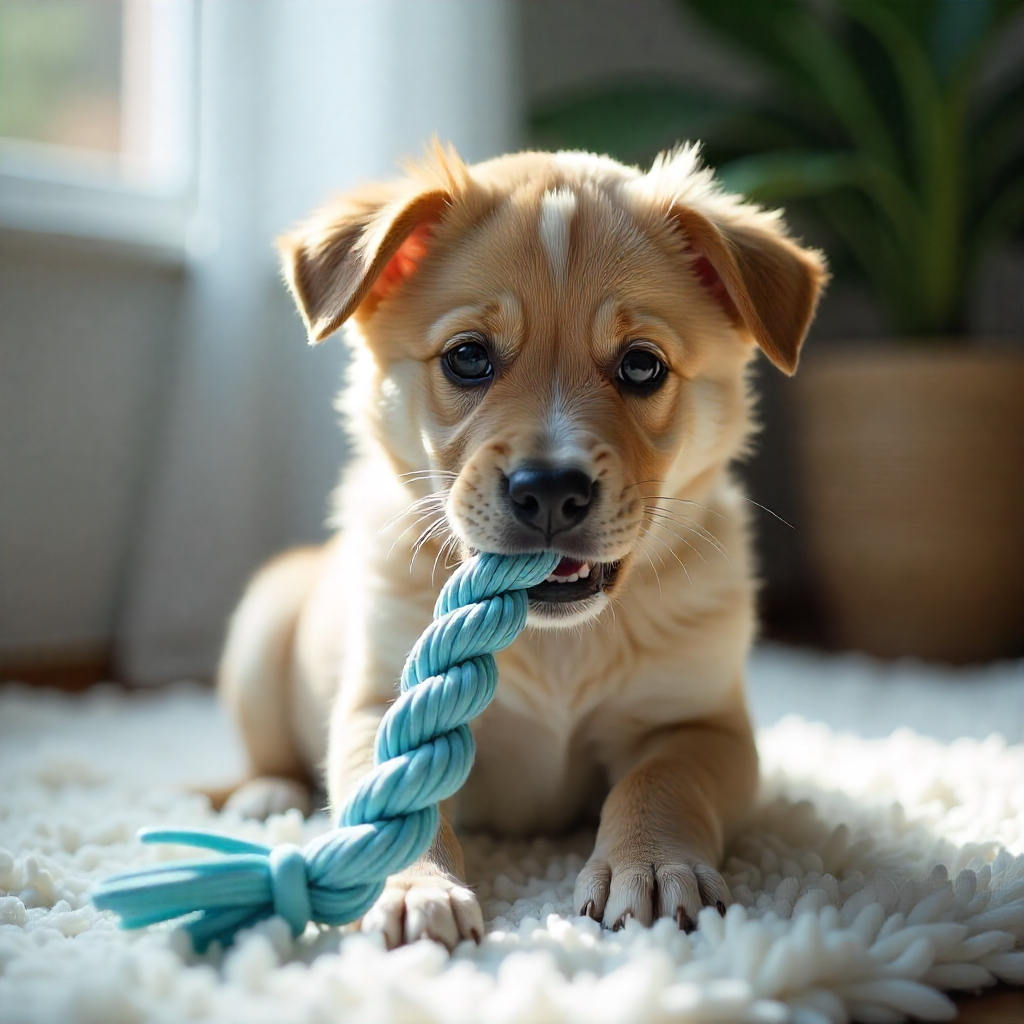
The key to effective positive reinforcement is using high-value treats that your puppy loves. These treats should be small, soft, and easy to chew quickly so you can maintain a fast pace during training sessions. With so many options on the market, it can be challenging to find treats that are both highly motivating and nutritionally appropriate for a growing puppy. Using healthy options is crucial since they’ll be consuming many treats. To see our top picks that are perfectly sized, healthy, and irresistible to most puppies, check out our review of the Best Puppy Training Treats (Healthy Options).
